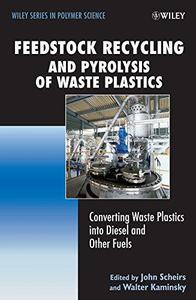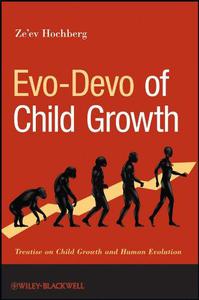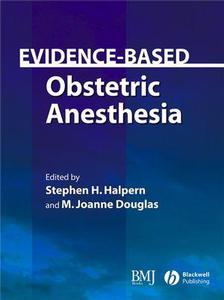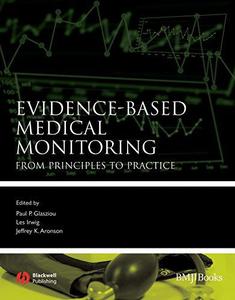
 |
 Feedstock Recycling and Pyrolysis of Waste Plastics: Converting Waste Plastics into Diesel and Other Fuels By John Scheirs(eds.) 2006 | 792 Pages | ISBN: 0470021527 | PDF | 11 MB Pyrolysis is a recycling technique converting plastic waste into fuels, monomers, or other valuable materials by thermal and catalytic cracking processes. It allows the treatment of mixed, unwashed plastic wastes. For many years research has been carried out on thermally converting waste plastics into useful hydrocarbons liquids such as crude oil and diesel fuel. Recently the technology has matured to the point where commercial plants are now available. Pyrolysis recycling of mixed waste plastics into generator and transportation fuels is seen as the answer for recovering value from unwashed, mixed plastics and achieving their desired diversion from landfill. This book provides an overview of the science and technology of pyrolysis of waste plastics.It describes the types of plastics that are suitable for pyrolysis recycling, the mechanism of pyrolytic degradation of various plastics, characterization of the pyrolysis products and details of commercially mature pyrolysis technologies. This book also covers co-pyrolysis technology, including: waste plastic/waste oil, waste plastics/coal, and waste plastics/rubber.Content: Chapter 1 Introduction to Feedstock Recycling of Plastics (pages 1-41): A. BuekensChapter 2 Acid?Catalyzed Cracking of Polyolefins: Primary Reaction Mechanisms (pages 43-72): Robert L. WhiteChapter 3 Catalytic Upgrading of Plastic Wastes (pages 73-110): J. Aguado, D. P. Serrano and J. M. EscolaChapter 4 Thermal and Catalytic Conversion of Polyolefins (pages 111-127): Jerzy WalendziewskiChapter 5 Thermal and Catalytic Degradation of Waste HDPE (pages 129-160): Kyong?Hwan LeeChapter 6 Development of a Process for the Continuous Conversion of Waste Plastics Mixtures to Fuel (pages 161-192): Takao Masuda and Teruoki TagoChapter 7 Catalytic Degradation of Plastic Waste to Fuel over Microporous Materials (pages 193-207): George ManosChapter 8 Liquefaction of Municipal Waste Plastics over Acidic and Nonacidic Catalysts (pages 209-224): Jale Yanik and Tamer KarayildirimChapter 9 Kinetic Model of the Chemical and Catalytic Recycling of Waste Polyethylene into Fuels (pages 225-247): Norbert MiskolcziChapter 10 Production of Gaseous and Liquid Fuels by Pyrolysis and Gasification of Plastics: Technological Approach (pages 249-283): C. Gisele Jung and Andre FontanaChapter 11 Yield and Composition of Gases and Oils/Waxes from the Feedstock Recycling of Waste Plastic (pages 285-313): Paul T. WilliamsChapter 12 Composition of Liquid Fuels Derived from the Pyrolysis of Plastics (pages 315-344): Marianne BlazsoChapter 13 Production of Premium Oil Products from Waste Plastic by Pyrolysis and Hydroprocessing (pages 345-361): S. J. Miller, N. Shah and G. P. HuffmanChapter 14 The Conversion of Waste Plastics/Petroleum Residue Mixtures to Transportation Fuels (pages 363-380): Mohammad Farhat Ali and Mohammad Nahid SiddiquiChapter 15 Overview of Commercial Pyrolysis Processes for Waste Plastics (pages 381-433): John ScheirsChapter 16 Fluidized Bed Pyrolysis of Plastic Wastes (pages 435-474): Umberto Arena and Maria Laura MastelloneChapter 17 The Hamburg Fluidized?bed Pyrolysis Process to Recycle Polymer Wastes and Tires (pages 475-491): Walter KaminskyChapter 18 Liquefaction of PVC Mixed Plastics (pages 493-529): Thallada Bhaskar and Yusaku SakataChapter 19 Liquid Fuel from Plastic Wastes Using Extrusion-Rotary Kiln Reactors (pages 531-548): Sam Behzadi and Mohammed FaridChapter 20 Rotary Kiln Pyrolysis of Polymers Containing Heteroatoms (pages 549-567): Andreas Hornung and Helmut SeifertChapter 21 Microwave Pyrolysis of Plastic Wastes (pages 569-594): C. Ludlow?Palafox and H. A. ChaseChapter 22 Continuous Thermal Process for Cracking Polyolefin Wastes to Produce Hydrocarbons (pages 595-604): Jean DisponsChapter 23 Waste Plastic Pyrolysis in Free?Fall Reactors (pages 605-623): Ali Y. Bilgesu, M. Cetin Kocak and Ali KaradumanChapter 24 Monomer Recovery of Plastic Waste in a Fluidized Bed Process (pages 627-640): Walter KaminskyChapter 25 Feedstock Recycling of PET (pages 641-661): Toshiaki Yoshioka and Guido GrauseChapter 26 The Liquefaction of Plastic Containers and Packaging in Japan (pages 663-708): A. Okuwaki, T. Yoshioka, M. Asai, H. Tachibana, K. Wakai and K. TadaChapter 27 Process and Equipment for Conversions of Waste Plastics into Fuels (pages 709-728): Alka ZadgaonkarChapter 28 Converting Waste Plastics into Liquid Fuel by Pyrolysis: Developments in China (pages 729-755): Yuan Xingzhong  Fatigue of Materials and Structures: Application to Damage and Design By 2011 | 313 Pages | ISBN: 1848212674 | PDF | 10 MB The design of mechanical structures with improved and predictable durability cannot be achieved without a thorough understanding of the mechanisms of fatigue damage and more specifically the relationships between the microstructure of materials and their fatigue properties. Written by leading experts in the field, this book (which is complementary to Fatigue of Materials and Structures: Application to Damage and Design, also edited by Claude Bathias and Andre Pineau), provides an authoritative, comprehensive and unified treatment of the mechanics and micromechanisms of fatigue in metals, polymers and composites. Each chapter is devoted to one of the major classes of materials or to different types of fatigue damage, thereby providing overall coverage of the field. The book deals with crack initiation, crack growth, low-cycle fatigue, gigacycle fatigue, shorts cracks, fatigue micromechanisms and the local approach to fatigue damage, corrosion fatigue, environmental effects and variable amplitude loadings, and will be an important and much used reference for students, practicing engineers and researchers studying fracture and fatigue in numerous areas of mechanical, structural, civil, design, nuclear, and aerospace engineering as well as materials science.Content: Chapter 1 High Temperature Fatigue (pages 1-130): Stephen D. Antolovich and Andre PineauChapter 2 Analysis of Elasto?Plastic Strains and Stresses Near Notches Subjected to Monotonic and Cyclic Multiaxial Loading Paths (pages 131-178): Gregory GlinkaChapter 3 Fatigue of Composite Materials (pages 179-204): Claude BathiasChapter 4 Fatigue of Polymers and Elastomers (pages 205-222): Claude BathiasChapter 5 Probabilistic Design of Structures Submitted to Fatigue (pages 223-263): Bruno SudretChapter 6 Prediction of Fatigue Crack Growth within Structures (pages 265-298): Jean Lemaitre  Fashioning Globalisation By Maureen Molloy, Wendy Larner(auth.) 2013 | 210 Pages | ISBN: 1444337017 | PDF | 2 MB Drastic changes in the career aspirations of women in the developed world have resulted in a new, globalised market for off-the-peg designer clothes created by independent artisans. This book reports on a phenomenon that seems toexemplify the twin imperatives of globalisation and female emancipation. A major conceptual contribution to the literatures on globalisation, fashion and gender, analysing the ways in which women's entry into the labour force over the past thirty years in the developed world has underpinned new forms of aestheticised production and consumption as well as the growth of 'work-style' businesses A vital contribution to the burgeoning literature on culture and creative industries which often ignores the significant roles taken by women as entrepreneurs and designers rather than mere consumers Introduces fashion scholars and economic geographers to a paradigmatic example of the new designer fashion industries emerging in a range of countries not traditionally associated with fashion Takes a fresh perspective on an industry in which Third World garment workers have been the subject of exhaustive analysis but first world women have been largely ignored Content: Chapter 1 What We Saw and Why We Started this Project (pages 1-18): Chapter 2 Global Aspirations (pages 19-42): Chapter 3 Policy for a New Economy (pages 43-68): with Richard Le Heron and Nick LewisChapter 4 Cultivating Urbanity (pages 69-97): with Alison GoodrumChapter 5 Gendering the 'Virtuous Circle' (pages 99-123): Chapter 6 Creating Global Subjects (pages 125-151): Chapter 7 Lifestyle or Workstyle? Female Entrepreneurs in New Zealand Designer Fashion (pages 153-178): Chapter 8 Conclusion (pages 179-189):  Facetten einer Wissenschaft: Chemie aus ungewohnlichen Perspektiven By 2004 | 348 Pages | ISBN: 3527310576 | PDF | 10 MB Content:  Extremism and the Psychology of Uncertainty By 2011 | 317 Pages | ISBN: 1444331280 | PDF | 3 MB Extremism and the Psychology of Uncertainty showcases cutting-edge scientific research on the extent to which uncertainty may lead to extremism. Contributions come from leading international scholars who focus on a wide variety of forms, facets and manifestations of extremist behavior. Systematically integrates and explores the growing diversity of social psychological perspectives on the uncertainty extremism relationshipShowcases contemporary cutting edge scientific research from leading international scholarsOffers a broad perspective on extremism and focuses on a wide variety of different forms, facets and manifestationsAccessible to social and behavioral scientists, policy makers and those with a genuine interest in understanding the psychology of extremismContent: Chapter 1 The Need for Certainty as a Psychological Nexus for Individuals and Society (pages 1-18): Arie W. Kruglanski and Edward OrehekChapter 2 Self?Uncertainty, Social Identity, and the Solace of Extremism (pages 19-35): Michael A. HoggChapter 3 Extremism is Normal (pages 36-54): Dominic AbramsChapter 4 The Psychology of the Absurd (pages 55-70): Travis ProulxChapter 5 Radical Worldview Defense in Reaction to Personal Uncertainty (pages 71-89): Kees van den Bos and Annemarie LosemanChapter 6 The Uncertainty?Threat Model of Political Conservatism (pages 90-111): John T. Jost and Jaime L. NapierChapter 7 Dying to be Popular (pages 113-130): Jason T. Siegel, William D. Crano, Eusebio M. Alvaro, Andrew Lac, David Rast and Vanessa KetteringChapter 8 The Extremism of Everyday Life (pages 131-146): Mark J. Landau, Zachary K. Rothschild and Daniel SullivanChapter 9 Religious Zeal after Goal Frustration (pages 147-164): Ian McGregor, Kyle A. Nash and Mike PrenticeChapter 10 Dehumanization, Demonization, and Morality Shifting (pages 165-182): Roger Giner?Sorolla, Bernhard Leidner and Emanuele CastanoChapter 11 Light from Dark (pages 183-193): Todd L. PittinskyChapter 12 Uncertainty, Insecurity, and Ideological Defense of the Status Quo (pages 195-211): Christopher M. Federico and Grace M. DeasonChapter 13 Authoritarianism, Need for Closure, and Conditions of Threat (pages 212-227): Jennifer L. Merolla, Jennifer M. Ramos and Elizabeth J. ZechmeisterChapter 14 Constructing Extremism (pages 228-245): Viviane SeyranianChapter 15 Collective Uncertainty and Extremism (pages 246-262): Fathali M. Moghaddam and Karen LoveChapter 16 Uncertainty, and the Roots and Prevention of Genocide and Terrorism (pages 263-280): Ervin Staub  Explosives, Fifth, Completely Revised Edition By Dr. Rudolf Meyer, Josef Kohler, Dr.?Ing. Axel Homburg(auth.) 2002 | 451 Pages | ISBN: 3527302670 | PDF | 3 MB This world-famous reference work has been enlarged and updated without tampering with its tried and tested format. Around 500 alphabetically ordered, monographic entries consider the physicochemical properties, production methods and safe applications of over 120 explosive chemicals; discuss 70 fuels, additives and oxidizing agents; and describe test methods. The extensive thermodynamic data have been thoroughly updated and for the first time are also provided in electronic format. The included CD-ROM was compiled by the Fraunhofer Institute of Chemical Technology (Pfinztal, Germany) and represents an excerpt from the ICT Thermodynamical Database. Not only additional thermodynamic data, and references to further reading, but also enhanced search facilities are provided. Other key features include: the 1500-entry combined index and glossary (comprising terms and abbreviations in English, French and German), conversion tables and many literature references. This book is suitable for explosive experts and also for translators, public authorities and patent lawyers. From reviews of previous editions: '... This wealth of information and an index that comprises some 1500 keywords and several conversion tables make this a unique source of knowledge for anybody working with explosives.' (Propellants, Explosives, Pyrotechnics)Content:  Evo-Devo of Child Growth: Treatise on Child Growth and Human Evolution By Ze'Ev Hochberg(auth.) 2012 | 245 Pages | ISBN: 1118027167 | PDF | 4 MB Working with principles from the fields of evolutionary and developmental biology (evo-devo), this fascinating work offers a new approach to analyzing child growth and development, examining each stage and transition in detail, from fetal development to preadulthood. Based on the author's in-depth review of the current literature and his own observations as a pediatric endocrinologist, the book demonstrates how the transitions between human life history phases represent unique periods of evolutionary adaptive response to the environment. In addition, the author explains why an understanding of these transition periods enables us to better understand the sequence and mechanisms of child growth as well as to better diagnose child growth disorders.Logically organized and clearly written, Evo-Devo of Child Growth:Sets a solid foundation of principles such as evolutionary thinking in medicine and child growth, life history theory, and heterochrony and allometryExamines the relationship between child growth and the theory of life historyApplies evo-devo theory to fetal growth, infancy, childhood, juvenility, adolescence, and preadulthoodExplores the trade-offs and adaptive phenotypic plasticity during transition periodsExplains the role of life history theory in understanding and diagnosing growth disorders such as Down syndrome, Noonan syndrome, and Silver-Russell syndromeIn addition to the author's own analysis and observations, this book also features notes from leading clinicians and evolutionary biologists, offering additional perspectives on the relationship between evo-devo and child growth and development.Evo-Devo of Child Growth provides a new perspective for evolutionary biologists to understand the phases and transitions of child growth. Moreover, it offers a new approach to help clinicians to better understand and diagnose a broad range of child growth disorders.Content: Chapter 1 Introduction (pages 1-10): Chapter 2 Child Growth and the Theory of Life History (pages 11-52): Chapter 3 Fetal Growth (pages 53-66): Chapter 4 Infancy (pages 67-90): Chapter 5 Childhood (pages 91-95): Chapter 6 Juvenility (pages 96-114): Chapter 7 Adolescence (pages 115-126): Chapter 8 Youth (pages 127-130): Chapter 9 Evolutionary Strategies for Body Size (pages 131-142): Chapter 10 Energy Considerations (pages 143-148): Chapter 11 Stage Transitions: Trade?Offs and Adaptive Phenotypic Plasticity (pages 149-178): Chapter 12 Life History Theory in Understanding Growth Disorders (pages 179-186): Chapter 13 When the Packages Disintegrate (pages 187-189): Chapter 14 Concluding Remarks (pages 190-193):  Evidence-based Obstetric Anesthesia By 2005 | 256 Pages | ISBN: 072791734X | PDF | 3 MB This is the first text to systematically review the evidence for obstetric anesthesia and analgesia.Evidence-based practice is now being embraced worldwide as a requirement for all clinicians; in the everyday use of anesthesia and analgesia for childbirth, anesthetists will find this synthesis of the best evidence an invaluable resource to inform their practice.Contributions from anesthetic specialists trained in the skills of systematic reviewing provide a comprehensive and practical guide to best practice in normal and caesarean section childbirth.This book, coming from one of the world's leading obstetric centers and the cradle of evidence-based medicine, is a much needed addition to the obstetric anesthesia literature.Content: Chapter 1 Consent for Obstetric Analgesia and Anesthesia (pages 3-9): M. Joanne DouglasChapter 2 Epidural Analgesia and the Progress of Labor (pages 10-22): Barbara L. Leighton and Stephen H. HalpernChapter 3 Maintenance of Epidural Analgesia for Labor - Continuous Infusion or Patient Controlled (pages 23-29): Stephen H. HalpernChapter 4 The use of Transcutaneous Electrical Nerve Stimulation for Labor Pain (pages 30-37): Carolyn F. WeinigerChapter 5 Is Nitrous Oxide an Effective Analgesic for Labor? A Qualitative Systematic Review (pages 38-55): Jean E. Kronberg and Dorothy E.A. ThompsonChapter 6 Choice of Local Anesthetic for Labor and Delivery - Bupivacaine, Ropivacaine and Levobupivacaine (pages 56-67): Stephen H. HalpernChapter 7 Intrathecal Opioids in Labor - Do they Increase the Risk of Fetal Bradycardia? (pages 68-76): Chahe Mardirosoff and Martin R. TramerChapter 8 Epidural Catheter Design and the Incidence of Complications (pages 77-88): Margaret Srebrnjak and Stephen H. HalpernChapter 9 The Effect of Increasing Central Blood Volume to Decrease the Incidence of Hypotension Following Spinal Anesthesia for Cesarean Section (pages 89-100): Pamela J. MorganChapter 10 The use of Vasopressors for the Prevention and Treatment of Hypotension Secondary to Regional Anesthesia for Cesarean Section (pages 101-107): Stephen H. Halpern and Michelle ChochinovChapter 11 Is Regional Anesthesia Safer than General Anesthesia for Cesarean Section? (pages 108-131): Yehuda Ginosar, Ian F. Russell and Stephen H. HalpernChapter 12 Prevention and Treatment of Side?effects of Neuraxial Opioids (pages 132-151): Niall L. Purdie and Martin van der VyverChapter 13 Multimodal Analgesia Following Cesarean Section: Use of Non?steroidal Anti?inflammatory Drugs Combined with Neuraxial Opioids (pages 152-161): Pamela Angle and Kamal HussainChapter 14 The Use of Neuraxial Anesthesia in Parturients with Thrombocytopenia: What is an Adequate Platelet Count? (pages 165-177): Joanne M. DouglasChapter 15 A Rational Approach to Aspiration Prophylaxis (pages 178-191): Geraldine O'Sullivan, Darren Hart and Andrew ShennanChapter 16 Postdural Puncture Headache (pages 192-207): Peter T?L. Choi and Stefan LucasChapter 17 Epidural Analgesia and Back Pain (pages 208-216): Terrance W. BreenChapter 18 Analgesia for External Cephalic Version (pages 217-224): William WightChapter 19 Is there a Difference Between the Obstetric and Non?obstetric Airway? (pages 225-236): Eric Goldszmidt  Evidence-based Medical Monitoring: From Principles to Practice By 2008 | 369 Pages | ISBN: 1405153997 | PDF | 5 MB Monitoring is a major component of management of chronic diseases such as diabetes, cardiovascular disease, arthritis and depression. Yet poor monitoring means healthcare costs are rising.This book discusses how monitoring principles adopted in other spheres such as clinical pharmacology and evidence-based medicine can be applied to chronic disease in the global setting. With contributions from leading experts in evidence-based medicine, it is a ground-breaking text for all involved in delivery of better and more effective management of chronic illnesses.Content: Chapter 1 An Introduction to Monitoring Therapeutic Interventions in Clinical Practice (pages 3-14): Paul P. Glasziou and Jeffrey K. AronsonChapter 2 A Framework for Developing and Evaluating a Monitoring Strategy (pages 15-30): David MantChapter 3 Developing Monitoring Tools: Integrating the Pathophysiology of Disease and the Mechanisms of Action of Therapeutic Interventions (pages 31-47): Jeffrey K. Aronson and Susan MichieChapter 4 Biomarkers and Surrogate Endpoints in Monitoring Therapeutic Interventions (pages 48-62): Jeffrey K. AronsonChapter 5 Choosing the Best Monitoring Tests (pages 63-74): Les Irwig and Paul P. GlasziouChapter 6 Monitoring the Initial Response to Treatment (pages 75-89): Katy Bell, Jonathan Craig and Les IrwigChapter 7 Control Charts and Control Limits in Long?Term Monitoring (pages 90-102): Petra MacaskillChapter 8 Developing a Monitoring Schedule: Frequency of Measurement (pages 103-113): Andrew J. FarmerChapter 9 How should we Adjust Treatment? (pages 114-123): Paul P. GlasziouChapter 10 Monitoring as a Learning and Motivational Tool (pages 123-139): Susan Michie, Kirsten McCaffery and Carl HeneghanChapter 11 Monitoring from the Patient's Perspective: The Social and Psychological Implications (pages 140-157): Kirsten McCaffery and Susan MichieChapter 12 Evaluating the Effectiveness and Costs of Monitoring (pages 158-165): Patrick M.M. BossuytChapter 13 Good Practice in Delivering Laboratory Monitoring (pages 166-178): W. Stuart A. SmellieChapter 14 Point?of?Care Testing in Monitoring (pages 179-193): Christopher P. PriceChapter 15 Monitoring for the Adverse Effects of Drugs (pages 194-210): Jamie J. E. Coleman, Robin E. Ferner and Jeffrey K. AronsonChapter 16 Monitoring Diabetes Mellitus Across the Lifetime of Illness (pages 213-228): Andrew J. FarmerChapter 17 Oral Anticoagulation Therapy (OAT) (pages 229-244): Carl Heneghan and Rafael PereraChapter 18 Monitoring Cholesterol?Modifying Interventions (pages 245-253): Paul P. Glasziou, Les Irwig and Stephane HeritierChapter 19 Monitoring Levothyroxine Replacement in Primary Hypothyroidism (pages 254-285): Andrea Rita HorvathChapter 20 Monitoring in Renal Transplantation (pages 286-302): Nicholas B. Cross and Jonathan CraigChapter 21 Monitoring in Pre?Eclampsia (pages 303-312): Pisake Lumbiganon and Malinee LaopaiboonChapter 22 Monitoring in Intensive Care (pages 313-324): Jan M. Binnekade and Patrick M.M. BossuytChapter 23 Monitoring Intraocular Pressure in Glaucoma (pages 325-334): Les Irwig, Paul R. Healey, Jefferson D'Assuncao and Petra MacaskillChapter 24 Monitoring in Osteoarthritis (pages 335-356): George Peat, Mark Porcheret, John Bedson and Alison M. Ward  Evidence-based Dementia Practice By 2002 | 909 Pages | ISBN: 0632052961 | PDF | 10 MB The era of therapeutic nihilism in dementia has ended, with the emergence of agents for symptomatic treatment, those that delay the course of the disease or prevent the onset of dementia, and new methods to manage symptoms. With the expansion of therapies, there is a clear danger of being overwhelmed by the volume of data. This book is designed to collect this information, distil what is relevant and reliable, and present it in a format that is useful to clinicians who manage and treat people with dementia. The book is designed to bring together the latest, best and practical evidence on all aspects of management, from diagnosis and therapy to social and ethical considerations. The editors are all dynamic clinicians involved in the care of patients with dementia and the evaluation of therapies. Two of the editors are the leaders of the Cochrane Collaboration for the examination of therapies for dementia. There are no other books that take such a practical and problem-oriented or approach to the diagnosis and management of dementia. Furthermore none but this can be described as truely evidence-based.Content: Chapter I.1 Introduction (pages 1-5): Nawab QizilbashChapter I.2 Finding the Evidence (pages 6-11): Nawab QizilbashChapter I.3 Critical Appraisal (pages 12-13): Nawab QizilbashChapter I.4 Evidence?based Etiology and Harm (pages 14-17): Nawab QizilbashChapter I.5 Evidence?based Diagnosis (pages 18-25): Nawab QizilbashChapter I.6 Evidence?based Prognosis (pages 26-30): Nawab QizilbashChapter I.7 Evidence?based Interventions (pages 31-41): Nawab QizilbashChapter I.8 Evidence?based Systematic Reviews and Meta?Analyses (pages 42-59): Nawab QizilbashChapter I.9 Evidence?based Guidelines (pages 60-63): Nawab QizilbashChapter I.10 Evidence?based Economic Evaluation (pages 64-70): Nawab QizilbashChapter I.11 Accessing and Using the Best Evidence Efficiently in Dementia (pages 71-73): Nawab QizilbashChapter I.12 Evidence?based Audit: Evaluating Implementation (pages 74-78): Nawab QizilbashChapter II.1 Introduction (pages 79-85): Helena ChuiChapter II.2 Practice Guidelines (pages 86-91): Helena ChuiChapter II.3 Reaching a Diagnosis of Dementia (pages 92-105): Helena Chui, Mary C. Tierney and Serge GauthierChapter II.4 Reaching a Diagnosis of a Dementia Subtype (pages 106-193): Helena Chui, Ae?Young Lee, Jeffrey Cummings, Mary C. Tierney, Haydeh Payami, Jaime Diaz?Guzman, J. Mariamillan, David G. Munoz, F?lix Bermejo, Lisette Bosscher, Philip Scheltens, William Jagust, Helena Chui, Ae?Young Lee, Hilkka Soininen, Juhani Partanen, Kaj Blennow and Anders WallinChapter II.5 Conclusions (pages 194-196): Helena ChuiChapter III.1 Historical Evolution of the Concept of Dementia: A Systematic Review from 2000 BC to AD 2000 (pages 197-227): Gustavo C. RomanChapter III.2 Alzheimer's Disease (pages 228-259): David Knopman, Karen Ritchie, Catherine Polge, Irina Alafuzoff and Hilkka SoininenChapter III.3 Vascular Dementia (pages 260-287): Didier Leys, Elisabet Englund and Timo ErkinjunttiChapter III.4 Lewy Body Dementia (pages 288-296): Douglas GalaskoChapter III.5 Frontotemporal Lobar Atrophies: The Pick Complex (pages 297-311): David G. Munoz and Andrew KerteszChapter III.6 Other Important Dementias (pages 312-329): Juha O. Rinne, Irina Elovaara and Irina AlafuzoffChapter III.7 Reversible or Arrestable Dementias (pages 330-340): Lars?Olof Wahlund, Hans Basun and Gunhild WaldemarChapter III.8 Mild Cognitive Impairment (pages 341-354): Alan Kluger, James Golomb and Steven H. FerrisChapter IV.1 Aims of Treatment (pages 355-358): Jeffrey KayeChapter IV.2 Criteria for Clinical Decisions (pages 359-364): Jeffrey KayeChapter IV.3 Clinical Decisions in Practice (pages 365-372): Jeffrey KayeChapter IV.4 Delivering an Integrated Treatment Plan (pages 373-375): Jeffrey KayeChapter IV.5 What is the Evidence that a Dementia Treatment Works? (pages 376-427): Paul Leber, David Millson, David Jolley, Harry Ward, Nawab Qizilbash and Lon S. SchneiderChapter IV.6 Non?Pharmacological Techniques (pages 428-446): Robert T. WoodsChapter IV.7 Drugs in Development and Experimental Approaches (pages 447-457): Murat EmreChapter V.1 Introduction to Specific Therapies for Cognitive Symptoms or Modifying Disease Prognosis (pages 461-466): Nawab QizilbashChapter V.2 Treatment of Alzheimer's Disease (With or Without Cerebrovascular Disease) (pages 467-588): Lon S. Schneider, Nawab Qizilbash, Mary Sano, Fadi Massoud, Jeffrey Kaye, Jason T. Olin, Knut Laake, Anne Rita Oksengaard, Barry S. Oken, Kristine Yaffe, Kentaro Hashimoto, Jesus Lopez?Arrieta, John C. S. Breitner, Leon Flicker, Kenneth Rockwood and Jos? Luisrodriquez?MartinChapter V.3 Treatment of Vascular Dementia (pages 589-607): Jeffrey Kaye, Nawab Qizilbash, Helmi L. Lutsep, Mario Fioravanti and Leon FlickerChapter V.4 Treatment of Lewy Body Dementia (pages 608-614): E. Jane ByrneChapter V.5 Treatment of Reversible or Arrestable Dementias (pages 615-638): Perminder Sachdev, Julian Trollor and Jeffrey C. L. LooiChapter V.6 Treatment of Age?Associated Memory Impairment (pages 639-653): Keith Wesnes and Tony WardChapter V.7 Prevention of Dementia (pages 654-668): Anthony F. JormChapter VI.1 Introduction (pages 671-674): Pierre TariotChapter VI.2 Classes of Psychotropicsa Overview of Evidence from Clinical Trials (pages 675-694): Brian A. Lawlor, Gregory Swanwick, Louise Carrier and Pierre TariotChapter VI.3 Problems (pages 695-722): D. P. Devanand, Gregory H. Pelton, Steven P. Roose, Brian A. Lawlor, Gregory Swanwick, Pierre Tariot and Joan M. SwearerChapter VI.4 Summary, Practical Recommendations and Opinions, (pages 720-724): Nawab Qizilbash, Jesus Lopez?Arrieta, Mark Castleden and Stephen EvansChapter VI.5 Common Medical Problems (pages 725-743): Nawab Qizilbash, Jesus Lopez?Arrieta, Mark Castleden and Stephen EvansChapter VII.1 Social and Ethical Issues (pages 747-754): Stephen G. PostChapter VII.2 Driving (pages 755-763): Desmond O'NeillChapter VII.3 Care?Giver Interventions (pages 764-794): Alisa Green and Henry BrodatyChapter VII.4 Genetic Counseling (pages 795-800): A. Dessa SadovnickChapter VII.5 Nursing Home Care for Patients with Dementia (pages 801-810): Ira R. Katz, Catherine J. Datto and Melissa Katz?SnellgroveChapter VII.6 Organization of Care (pages 811-827): Michael S. Dennis and James LindesayChapter VII.7 Memory Clinicsaa Guide to Implementation and Evaluation (pages 828-843): Roger Bullock and Nawab QizilbashChapter VII.8 Health Economics (pages 844-854): Alastair M. Gray |